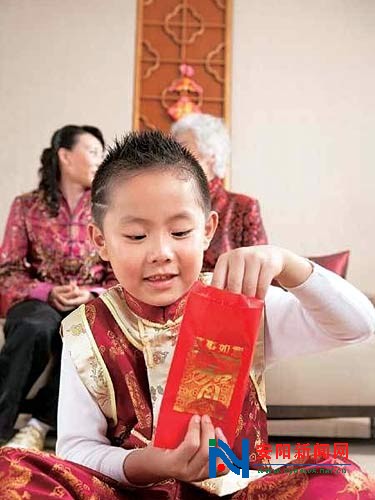Adults under strain as hongbao grow fatter
 0 Comment(s)
0 Comment(s) Print
Print E-mail China Daily, January 30, 2012
E-mail China Daily, January 30, 2012
For Chinese children, the arrival of Spring Festival brings with it cash-filled red envelopes, but the practice is putting strain on the wallets of adults.
 |
|
A boy takes Yasuiqian from a Hongbao. |
"My annual bonus stayed in my pocket for less than a week before it went out in the form of red envelopes," said Huang Yijing, a 30-year-old nurse from Shanghai, who forked out at least 1,000 yuan ($160) each to her nephews and nieces and gave 500 yuan or more to her friends' children.
Each Chinese New Year, Huang said she spends more than 5,000 yuan, equivalent to her monthly salary, on hongbao, the red envelopes filled with money that are traditionally given out on special occasions in China.
She said the practice has always been a source of stress.
"Unlike the traditions tied with the Western festival of Christmas, which allows you to choose a relatively more expensive gift if it's a good year and a cheaper one if it's a bad year, the unwritten rule attached to Chinese hongbao is that the amount of lucky money can either remain unchanged or go up, but definitely won't go down," she said.
A recent survey by Jilin-based newspaper City Evening News found more than 20 percent of 417 interviewees agreed that 1,000 yuan was the bottom line for the red envelope.
Huang said she has developed a system for the amount of money she gives to a child. The number varies according to the recipient's financial status and also depends on how well she knows the child's parents
"On top of that, I'm single with no children and that means I give out lots of red envelopes with nothing in return," she added.






Go to Forum >>0 Comment(s)